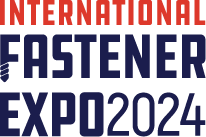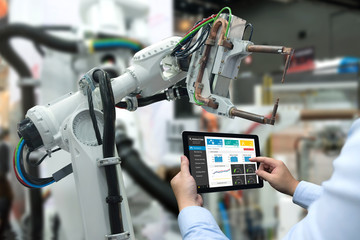From the ashes of 2020, a new type of organization will rise. To thrive in the new world, companies who embrace digital transformation and adopt the latest (Infrastructure & Operations) I&O technology for the benefit of the distributed enterprise will come out of this year stronger, fitter, and with unmatched potential for future success.
In enterprise I&O specifically, the latest technologies will have a transformational impact. Although this was already trending in the past five years, 2020 accelerated the adoption of digital transformation in every industry. Cloud adoption, edge computing and agile development processes are creating shifts in how we think about the distributed enterprise.
Because of these trends, Gartner is predicting that 90% of the infrastructure and operations (I&O) teams will work remotely as soon as 2023. With new capabilities (and a willingness to implement them), the goalposts are shifting when it comes to what’s possible with I&O technology.
Quick Takeaways:
- The anywhere operations model and its associated technologies will feature in digital transformation roadmaps in the coming year.
- Artificial intelligence for IT operations (AIOps) and infrastructure integration with automation are now essential considerations for I&O teams.
- Companies will invest in modernizing core infrastructure to bridge the digital and physical divide.
The 5 I&O Technology Trends to Look for in 2021
The tech stacks deployed in enterprise I&O were already under scrutiny before the pandemic. Once the scale of the disruption became clear, companies needed to adjust their digital transformation and technology adoption roadmaps to deal with the new normal.
According to Gartner, these trends will permanently change the I&O tech landscape for every manufacturer, distributor and service provider going forward. Rethinking the possibilities should be part of your digital transformation playbook now.
For most organizations, working from home was already a required competency. Scaling these remote work capabilities quickly became essential and, in the future, will remain a vital part of all I&O considerations. The five I&O trends and technologies that will shape 2021 all address challenges and limitations in the pre-COVID-19 organization. Here’s what to look for over the coming year.
1. Technology that Enables Anywhere Operations
One of the key trends that emerged from the past year is the need for I&O leaders to own their tech stacks. From designing the hardware systems to implementing the software solutions for each business unit, leaders should aim to enable anywhere operations throughout the enterprise. Managing all enterprise I&O from a single location is no longer feasible.
This shift from the old culture to remote work does come with benefits. Greater efficiencies are available, and you’ll no longer have to recruit from a specific geographic location. With the ability to respond to issues from anywhere, resources remain productive while the organization’s core technologies continue to operate reliably. Adopting solutions that support both on-site and remote work interchangeably will be one of the biggest trends we see in 2021.
2. Infrastructure Optimization and Automation
Automation remains the one technology that drives productivity and enables new levels of efficiency, but it relies on one key component – integration. Optimizing infrastructure depends on connecting all environments, unifying the data generated, and reporting precise information to the right roles that could be distributed around the world.
Organizations will turn to infrastructure transformation playbooks that include integrated IoT, cloud storage and edge computing for their daily operations. For many industrial distributors, the effort can be as simple as building an e-commerce solution. For others, it could mean a complete production overhaul and implementing a development operations (DevOps) technology integration strategy.
3. AIOps Can Improve Agility
A new way to ensure optimal infrastructure and ensure operational continuity is with artificial intelligence for IT operations (AIOps). While it may increase the complexity of the technology landscape, the upside makes it worth it for organizations to invest in solutions that require more supervision instead of hands-on execution.
AIOps enables organizations to:
- Increase agility and realize new productivity gains
- Reduce costs and improve service level performance
- Mitigate risks and create a competitive differentiator for the company
Gartner already predicted that at least 25% of large enterprises would use some form of AIOps by 2022 for monitoring non-legacy I&O. With the modern integration capabilities available from cloud tech like virtualization and containerization, I&O teams can extend monitoring to older connected systems.
4. Bridging the Digital and Physical Divide
In manufacturing, the use of RFID, IoT, and virtualization will help bridge the gap between digital and physical infrastructure. Remote sensing was an emerging solution for manufacturers in aerospace and other specialized industries, which now allows for added infrastructure optimization and automation.
For producers and distributors of industrial products, fasteners and other essential components required in modern electronics, it’s time to rethink the standard approach. Concepts like digital twins, remote sensing and industrial process automation will feature everywhere over the coming years.
5. Modernizing Core Infrastructure
All of the above depends on modernizing your core infrastructure. Technical debt has remained a hurdle for I&O-focused industries, hampering agility and increasing manual overheads. The C-suite now also has a stake in overcoming these challenges, making it the perfect time to look for solutions to your decades-old problems.
Building a new roadmap and making the case for key infrastructure investments is easier now and organizations are taking heed. While each business case will be different, those previously shelved plans may now have to move to the top of the pile. By modernizing legacy infrastructure and planning for future technical debt (or obsolescence) early, companies can build greater resilience into their current operations.
Learn More About I&O Technology And Innovation
I&O is open to disruption, especially across the manufacturing and distribution sectors that were slower adopters of newer technologies. Explore the Match & Meet platform to learn more about I&O and new technology.








